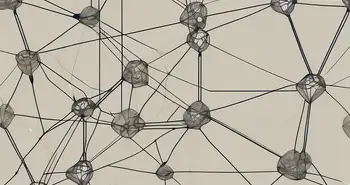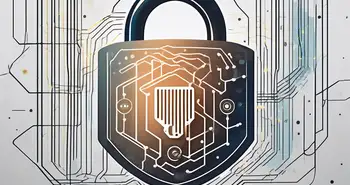Article Contents
The Byzantine General Problem in Blockchain

When it comes to understanding the Byzantine General Problem, it is important to delve into its historical context. The origin of this problem can be traced back to the ancient Byzantine Empire, where military commanders faced the challenge of coordinating their troops in the face of unreliable communication channels and potential traitors among their ranks.
The core concept of the Byzantine General Problem revolves around achieving consensus in a distributed system, even in the presence of faulty or malicious components. This problem has gained significant significance in the field of computer science, with applications ranging from distributed systems to blockchain technology.
In distributed systems, the Byzantine General Problem refers to the challenge of achieving consensus between multiple nodes that may exhibit arbitrary faults. This problem becomes even more pronounced in the realm of blockchain technology, where achieving consensus among a network of decentralized nodes is the key to maintaining the integrity and security of the blockchain.
Various theoretical approaches have been proposed to tackle the Byzantine General Problem. One such approach is the Two Generals' Problem, which investigates the challenge of coordinating the actions of two generals who must jointly attack or retreat, while accounting for possible faulty messages. Another approach is Byzantine Fault Tolerance, which focuses on designing systems that can tolerate arbitrary faults, including malicious behavior.
Despite its theoretical nature, practical solutions have been developed to address the Byzantine General Problem. In the context of blockchain technology, implementing Byzantine Fault Tolerance becomes crucial. This involves designing consensus algorithms that can withstand attacks and ensure the validity of transactions recorded on the blockchain. Similarly, in distributed systems, overcoming Byzantine faults requires the use of fault-tolerant protocols and redundancy mechanisms.
Why Bitcoin Could be the Answer?
In the realm of blockchain technology, the Byzantine Generals' Problem stands as a formidable challenge to achieving consensus among distrustful parties. At its core, this conundrum questions how a network of nodes can reach an agreement in the face of potential traitors spreading misinformation.
Enter Bitcoin, a trailblazer in the realm of digital currency, armed with a revolutionary solution to this age-old problem. Through the implementation of blockchain technology, Bitcoin establishes a decentralized and transparent ledger that records all transactions, effectively thwarting attempts at double spending and ensuring the integrity of the currency.
The Byzantine Generals' Problem, with its roots in distributed systems, is aptly addressed by Bitcoin's innovative approach. By leveraging cryptographic techniques and a robust consensus mechanism, Bitcoin establishes trust and agreement among participants without the need for a central authority. This decentralized network of nodes works collaboratively to verify transactions and maintain the integrity of the blockchain.
Furthermore, Bitcoin's proof-of-work protocol serves as a formidable defense against potential attacks, requiring significant computational resources to validate transactions and add new blocks to the chain. This energy-intensive process acts as a deterrent to malicious actors and reinforces the security of the network.
In essence, Bitcoin's triumph over the Byzantine Generals' Problem showcases the transformative power of blockchain technology. By fostering trust and consensus in a decentralized manner, Bitcoin paves the way for a future where secure and transparent transactions are the norm, revolutionizing the landscape of finance and beyond.
Looking towards the future, there are both challenges and opportunities in solving the Byzantine General Problem. One of the main challenges lies in scaling these solutions to accommodate larger networks with increased complexity. Additionally, innovations and developments in Byzantine Fault Tolerance continue to emerge, providing promising avenues for further research and improvement in this field.
As an expert in solving the Byzantine General Problem, I have encountered my fair share of challenges in addressing the complexities of achieving consensus in distributed systems. In fact, I vividly recall a project where we were tasked with implementing Byzantine Fault Tolerance in a large-scale blockchain platform. It required meticulous planning, rigorous testing, and constant collaboration among the team to ensure the system's resilience against Byzantine faults.
My personal advice to those seeking to solve the Byzantine General Problem is to embrace a holistic approach. Understand the historical context, explore theoretical concepts, and be open to practical solutions. Emphasize the importance of fault tolerance and consider the unique characteristics of the distributed system you're working with. By doing so, you'll be better equipped to overcome the challenges and make significant strides in solving this intriguing problem.
Frequently Asked Questions
What is the Byzantine General Problem?
The Byzantine General Problem refers to the challenge of achieving consensus in a distributed system, even in the presence of faulty or malicious components. It originated from the historical context of coordinating military actions in the Byzantine Empire.
Why is the Byzantine General Problem significant in computer science?
The Byzantine General Problem has significant implications in computer science, particularly in the fields of distributed systems and blockchain technology. It addresses the challenge of achieving consensus among a network of nodes, even when some nodes may exhibit arbitrary faults.
What are some theoretical approaches to the Byzantine General Problem?
There are several theoretical approaches to the Byzantine General Problem, including the Two Generals' Problem, which explores coordination between two generals in the presence of faulty messages, and Byzantine Fault Tolerance, which focuses on designing systems that can tolerate arbitrary faults.
What are some practical solutions to the Byzantine General Problem?
In the context of blockchain technology, implementing Byzantine Fault Tolerance is crucial to ensuring the integrity of the blockchain. This involves designing consensus algorithms that can withstand attacks and maintain the accuracy of recorded transactions. In distributed systems, overcoming Byzantine faults requires the use of fault-tolerant protocols and redundancy mechanisms.
What are the future perspectives on the Byzantine General Problem?
In the future, the challenges of scaling solutions for larger networks and increasing complexity will need to be addressed. Innovations and developments in Byzantine Fault Tolerance continue to emerge, offering opportunities for further research and improvement in this field.
As the Byzantine General Problem gains more attention in computer science, researchers are exploring various avenues to tackle its challenges. One promising area of study is the application of machine learning techniques to enhance Byzantine Fault Tolerance. By leveraging the power of artificial intelligence, it is possible to develop intelligent algorithms that can detect and mitigate Byzantine faults more effectively.
Furthermore, the Byzantine General Problem has also found relevance in other domains beyond computer science. For instance, it has been applied in the field of distributed robotics, where multiple robots need to coordinate their actions to accomplish a common goal. By addressing the challenges of Byzantine faults in robotic systems, researchers aim to improve the reliability and efficiency of collaborative robotic networks.
As you explore the complexities of the Byzantine General Problem and the innovative solutions in the realm of distributed systems, consider the power of blockchain technology in revolutionizing various industries. Morpher.com stands at the forefront of this transformation, offering a unique trading platform that harnesses blockchain to provide zero fees, infinite liquidity, and a plethora of trading options across diverse asset classes. Embrace the future of investing with Morpher's fractional investing, short selling capabilities, and up to 10x leverage. Ensure your safety and control with the Morpher Wallet and experience a new horizon of trading with Virtual Futures. Ready to join the revolution? Sign Up and Get Your Free Sign Up Bonus at Morpher.com and be part of a community that's shaping the future of trading.

Disclaimer: All investments involve risk, and the past performance of a security, industry, sector, market, financial product, trading strategy, or individual’s trading does not guarantee future results or returns. Investors are fully responsible for any investment decisions they make. Such decisions should be based solely on an evaluation of their financial circumstances, investment objectives, risk tolerance, and liquidity needs. This post does not constitute investment advice.

Painless trading for everyone
Hundreds of markets all in one place - Apple, Bitcoin, Gold, Watches, NFTs, Sneakers and so much more.

Painless trading for everyone
Hundreds of markets all in one place - Apple, Bitcoin, Gold, Watches, NFTs, Sneakers and so much more.









